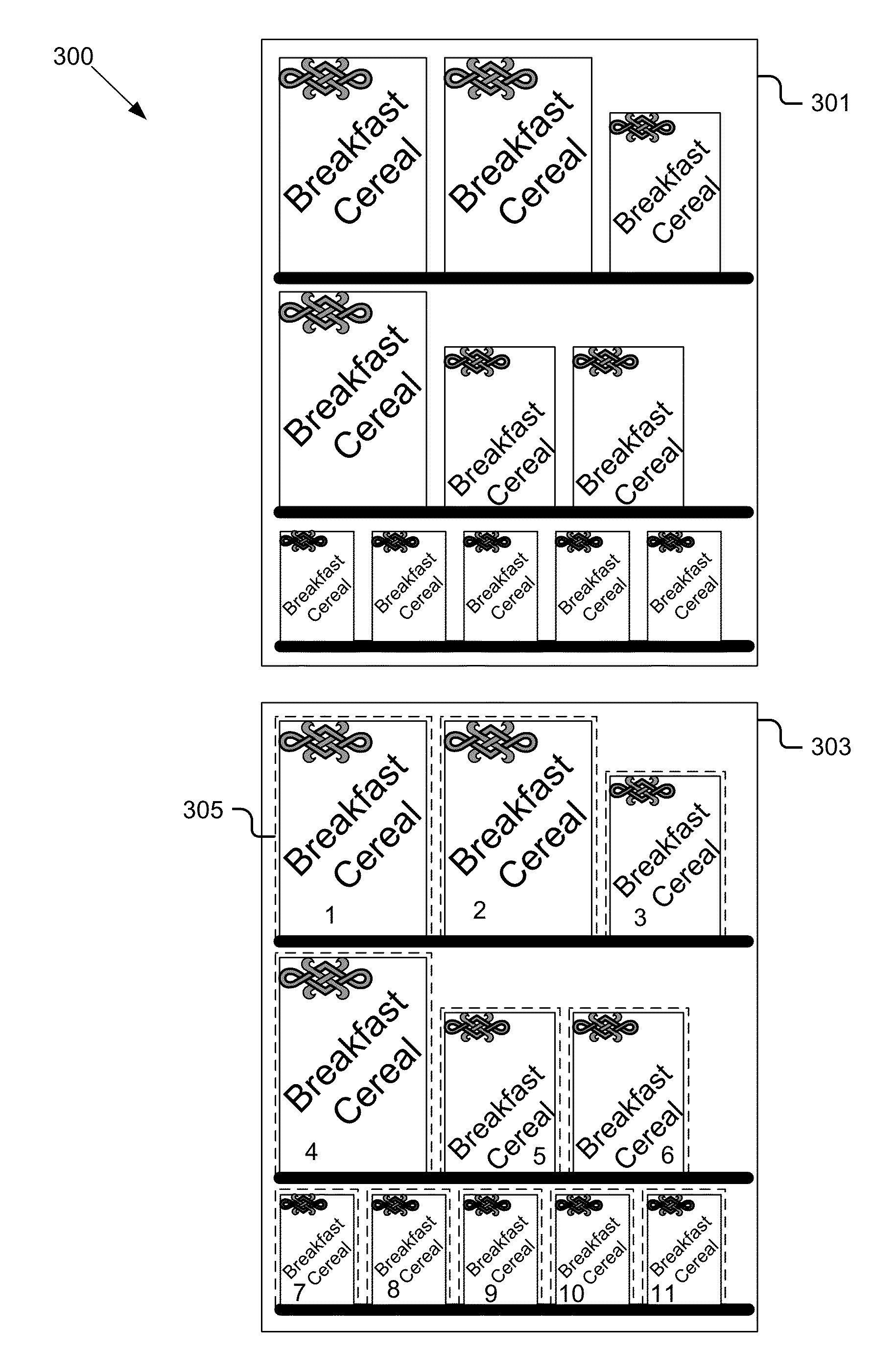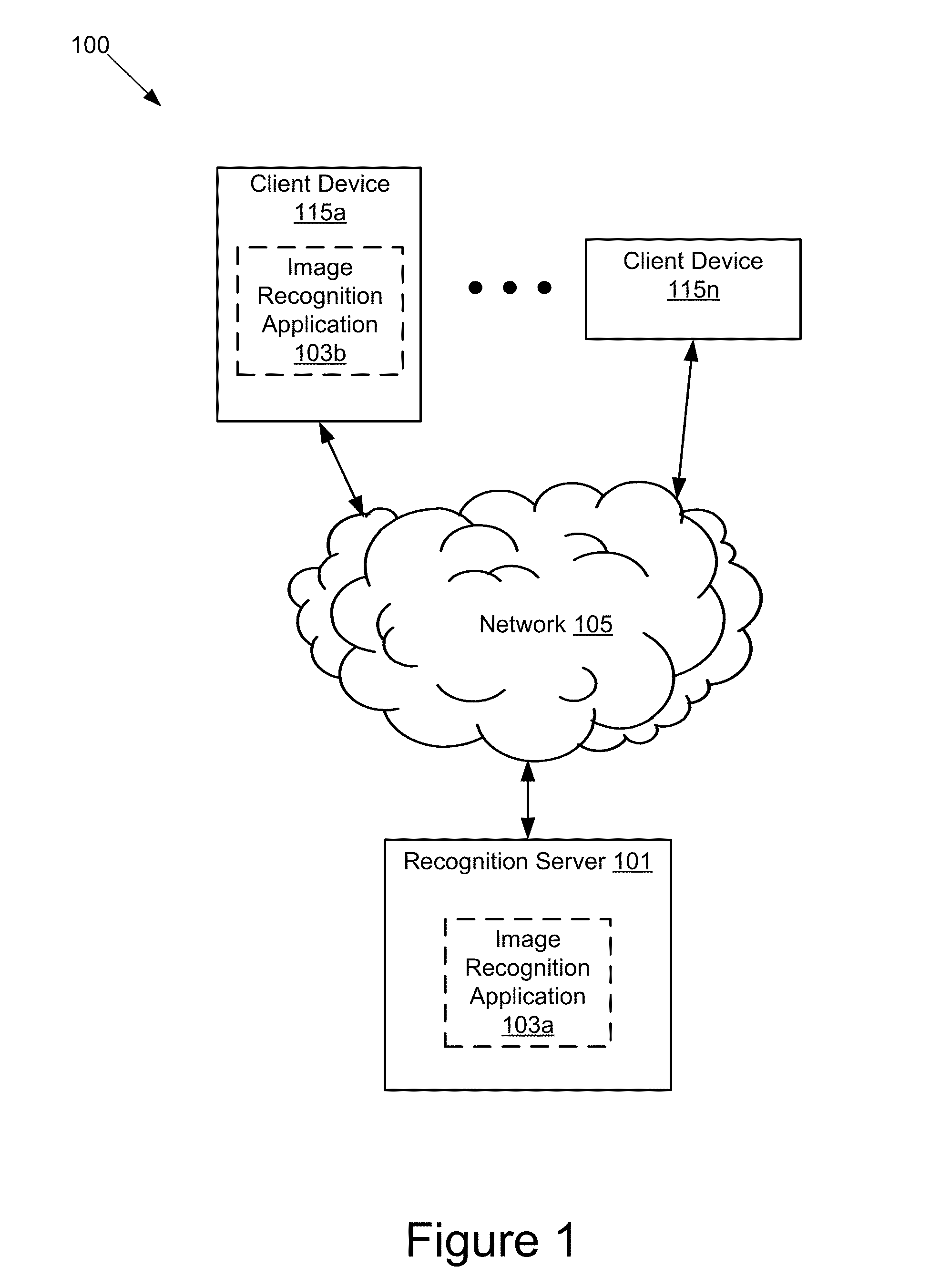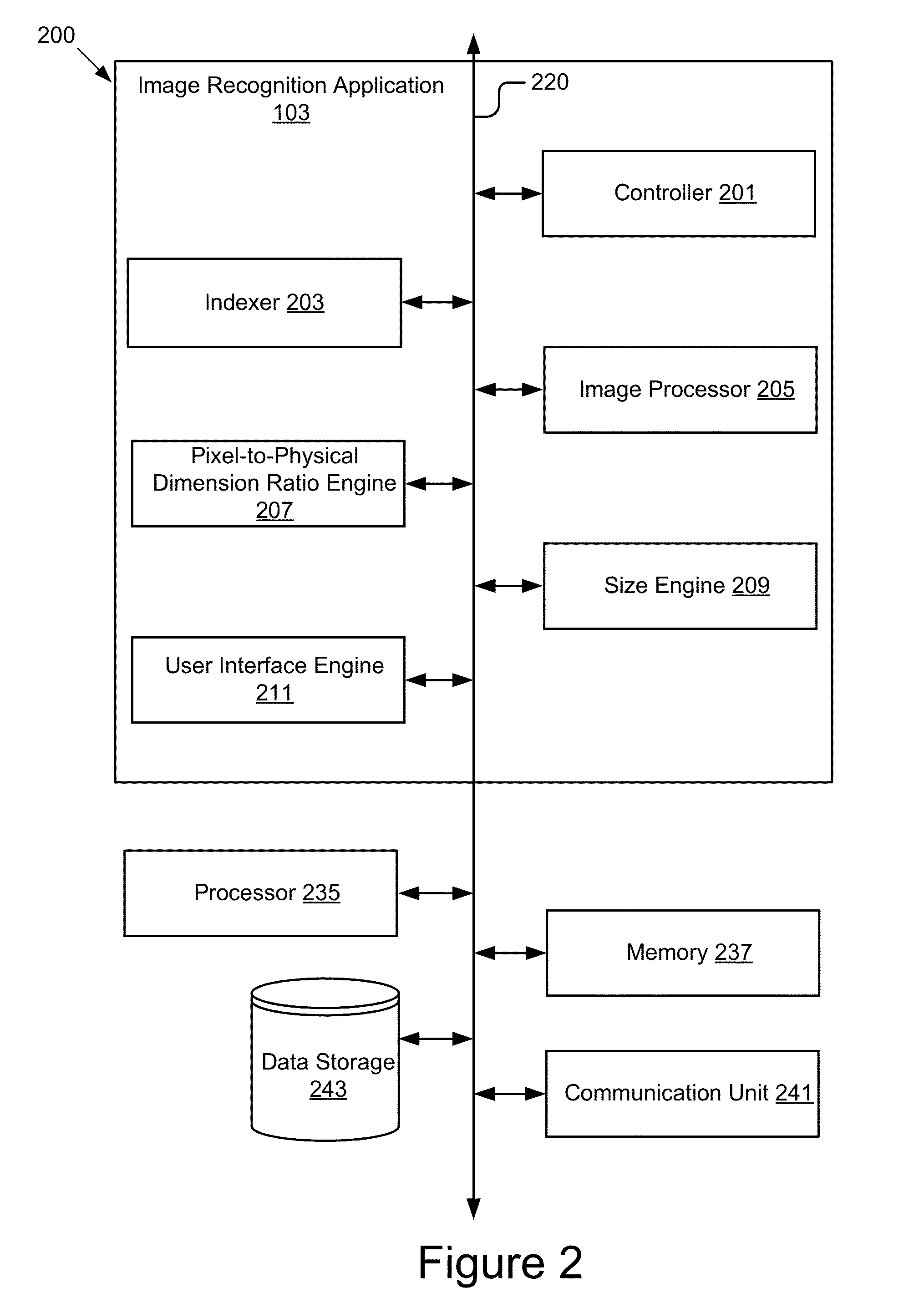Distinguishing Between Stock Keeping Units Using Hough Voting Methodology
a voting method and stock keeping technology, applied in the field of identifying and distinguishing between products, can solve the problems of difficult implementation of planograms, and the failure of existing image recognition techniques to distinguish between objects that are similar in appearance but vary in siz
- Summary
- Abstract
- Description
- Claims
- Application Information
AI Technical Summary
Benefits of technology
Problems solved by technology
Method used
Image
Examples
Embodiment Construction
[0019]FIG. 1 is a high-level block diagram illustrating one embodiment of a system 100 for distinguishing between stock keeping units of similar appearance that vary in size. The illustrated system 100 may have client devices 115a . . . 115n that can be accessed by users and a recognition server 101. In FIG. 1 and the remaining figures, a letter after a reference number, e.g., “115a,” represents a reference to the element having that particular reference number. A reference number in the text without a following letter, e.g., “115,” represents a general reference to instances of the element bearing that reference number. In the illustrated embodiment, these entities of the system 100 are communicatively coupled via a network 105.
[0020]The network 105 can be a conventional type, wired or wireless, and may have numerous different configurations including a star configuration, token ring configuration or other configurations. Furthermore, the network 105 may include a local area networ...
PUM
 Login to View More
Login to View More Abstract
Description
Claims
Application Information
 Login to View More
Login to View More - R&D
- Intellectual Property
- Life Sciences
- Materials
- Tech Scout
- Unparalleled Data Quality
- Higher Quality Content
- 60% Fewer Hallucinations
Browse by: Latest US Patents, China's latest patents, Technical Efficacy Thesaurus, Application Domain, Technology Topic, Popular Technical Reports.
© 2025 PatSnap. All rights reserved.Legal|Privacy policy|Modern Slavery Act Transparency Statement|Sitemap|About US| Contact US: help@patsnap.com



